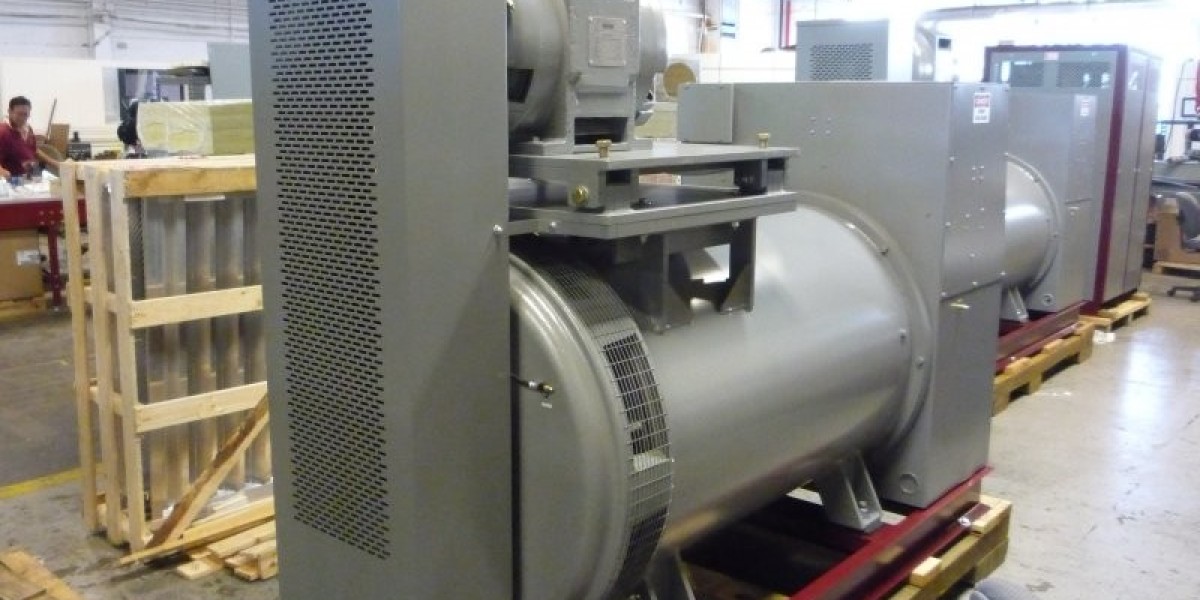The energy sector is undergoing a monumental transformation as renewable energy sources like wind, solar, and hydropower become integral to the global power grid. However, the rise of these intermittent sources of energy creates new challenges for grid stability, voltage regulation, and power quality. In this evolving landscape, synchronous condensers have emerged as vital components in modernizing power grids and ensuring energy security. This article delves into the growing significance of synchronous condensers, their role in enhancing grid stability, and their future in the energy transition.
What are Synchronous Condensers?
Synchronous condensers are rotating machines similar to synchronous motors, but they operate without a mechanical load. Their primary function is to provide reactive power, which is crucial for maintaining voltage stability in the power grid. Unlike traditional capacitors or static VAR compensators, synchronous condensers offer dynamic reactive power compensation. This allows them to adjust quickly to changing grid conditions, helping to stabilize voltage levels and improve overall grid reliability.
Synchronous condensers are especially important in grids that rely heavily on renewable energy. Wind and solar power plants produce electricity that can fluctuate due to weather patterns, creating voltage instability. Synchronous condensers help mitigate these fluctuations by providing or absorbing reactive power as needed, thereby stabilizing the voltage and ensuring that the grid can efficiently transmit power over long distances.
Market Trends and Growth
The synchronous condenser market is experiencing rapid growth due to the increasing demand for grid stability, particularly in regions integrating renewable energy sources into their power mix. According to industry reports, the global market for synchronous condensers is expected to grow at a compound annual growth rate (CAGR) in the next five years.
The rising penetration of renewable energy in regions like Europe, North America, and Asia-Pacific has driven the adoption of synchronous condensers. In Europe, for example, countries such as Germany and the United Kingdom have invested heavily in synchronous condenser installations to support their green energy goals. Similarly, in the United States, the increasing integration of solar and wind power into the grid has highlighted the need for reactive power compensation solutions like synchronous condensers.
In addition to supporting renewable energy integration, synchronous condensers play a crucial role in enhancing grid reliability and energy security. With the increasing frequency of power grid disturbances and the need for more resilient systems, utilities are turning to synchronous condensers as an essential tool for stabilizing and securing the grid.
Role in Modernizing Power Grids
The integration of synchronous condensers into modern power grids is crucial to their evolution and modernization. As traditional power plants based on fossil fuels are decommissioned in favor of cleaner, renewable energy sources, grid operators face challenges in maintaining voltage stability and power quality. Synchronous condensers offer a solution by providing the necessary reactive power support that was previously supplied by conventional thermal power plants.
Moreover, synchronous condensers are flexible and scalable, making them suitable for both large-scale utility applications and smaller distributed energy systems. Their ability to operate dynamically in response to changing grid conditions makes them an invaluable tool for grid operators working to balance supply and demand in real-time.
The versatility of synchronous condensers also allows for their use in enhancing grid resilience. As climate change increases the frequency and severity of extreme weather events, the ability to maintain grid stability under such conditions becomes increasingly important. Synchronous condensers can help to buffer the effects of these disturbances by providing rapid and reliable voltage control, ensuring that power continues to flow without interruption.
Ensuring Energy Security
Energy security is a critical concern for governments, utilities, and consumers worldwide. With the growing reliance on renewable energy sources, which are subject to variable generation patterns, the need for stable and reliable energy delivery becomes more pressing. Synchronous condensers help ensure energy security by stabilizing grid voltage and enabling efficient power transmission.
Additionally, synchronous condensers provide a level of grid flexibility that allows for the integration of energy storage solutions, such as batteries. By maintaining voltage stability, synchronous condensers enable energy storage systems to operate effectively, storing excess renewable energy for use during periods of low generation or high demand.
The Future of Synchronous Condensers
The future of synchronous condensers looks promising as the global energy landscape continues to evolve. With increased investments in renewable energy and the growing need for grid stability, the demand for synchronous condensers is expected to rise. Technological advancements, such as the development of more efficient and compact condenser units, are likely to drive further adoption.
Moreover, as countries set more ambitious climate targets and pursue net-zero emissions goals, the role of synchronous condensers will become even more crucial in maintaining grid stability and ensuring reliable energy access. As the energy transition accelerates, synchronous condensers will continue to play a central role in modernizing power grids and enhancing energy security.
Conclusion
Synchronous condensers represent a critical piece of the puzzle in modernizing power grids and ensuring the integration of renewable energy sources. Their ability to provide dynamic voltage support and enhance grid stability positions them as a key technology for the future. As the energy sector continues to evolve, the role of synchronous condensers will only grow, helping to ensure energy security, improve power quality, and enable a sustainable, low-carbon future.



